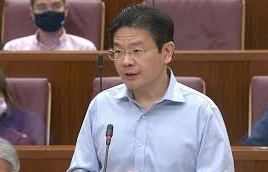The initiative shuts down after just five months, citing widespread failure to return shared umbrellas.
SINGAPORE: For many young Singaporeans, receiving their first paycheck is a rite of passage. But alongside the excitement of financial independence comes the sobering reality of numerous expenses: CPF deductions, student loans, contributions to family, and maybe a small indulgence for themselves. With tight budgets, the question of health insurance becomes a contentious issue.
Insurance agents may emphasize its importance, but for many, the costs feel insurmountable. This tension was evident in a conversation between Cheryl, who has health insurance, and Joan, who doesn’t. Their discussion highlighted the challenges and nuances of this decision for young adults.
Is Health Insurance Too Expensive?
The common perception is that health insurance is prohibitively costly. However, both Cheryl, 27, and Joan, 23, agree that basic plans can be affordable. Cheryl points out that annual premiums ranging between $2,000 and $3,000 translate to about $250 per month, a manageable amount if unnecessary expenses are curbed.
But affordability is subjective. Joan, whose modest income is stretched thin by medical expenses and daily necessities, disagrees. “I’d like to have health insurance, but it’s not something I can fit into my current budget,” she shares, citing her already frugal lifestyle of home-packed meals and cost-free hobbies.
For Cheryl, the situation was once similar. In her fresh graduate days, a significant portion of her income went toward student loans and family contributions, making it difficult to prioritize insurance. Today, she’s relieved to have fewer financial burdens, allowing her to allocate funds to health coverage.
The Illusion of “Not Falling Sick”
The idea of staying healthy as an alternative to insurance is tempting but flawed. Both Cheryl and Joan know that accidents and illnesses are unpredictable. Cheryl recalls her brother’s accident, where MediShield Life covered only a fraction of the medical costs, leaving her family in financial distress.
Joan, meanwhile, faces recurring expenses for mental health treatments and recalls a past struggle with early-onset arthritis that required her to use a wheelchair. “You can’t control these things,” she notes, emphasizing the unpredictability of health challenges.
With medical inflation expected to reach 10% in 2024, the cost of treatment is only set to rise. For Joan, the absence of insurance adds to her anxiety, a sentiment Cheryl understands deeply. “Getting health insurance is a form of taking care of our health,” Cheryl asserts, framing it as a proactive safety net.
Waiting for the Right Time
Some young adults believe they can delay purchasing health insurance until they’re older or more financially stable. But for Joan, this isn’t an option. Her pre-existing conditions make insurance more expensive and limit her coverage options.
Cheryl underscores this point by sharing her husband’s experience. Working in nightlife, he developed liver issues but was fortunately covered by a pre-existing insurance plan. “If he hadn’t been insured earlier, it would have been a financial nightmare,” she notes.
Joan’s case illustrates the importance of timing. While she understands the value of insurance, her current financial situation forces her to prioritize immediate needs. “I’m conscious about saving, but I can’t let that come at the expense of my mental health,” she says.
Finding Balance
For young adults, the decision to purchase health insurance is deeply personal and shaped by individual circumstances. Cheryl advises against comparisons, emphasizing that each person should move at their own pace.
“There’s no one-size-fits-all solution,” she concludes. “You just need to know what’s important to you and make decisions that align with your priorities.”








